At the Architecture Foundation’s latest Architecture on Stage event, architect and researcher Shahed Saleem presented a provocative thesis: that Britain’s much-maligned mosque architecture represents one of the most successful forms of cultural resistance in late 20th-century Britain. Drawing from his new book The Counter-Architecture of the British Mosque, Saleem reframes these buildings not as architectural failures, but as powerful expressions of community agency that challenge both multicultural orthodoxy and architectural establishment thinking. Oriana Fernandez reflects on the questions raised
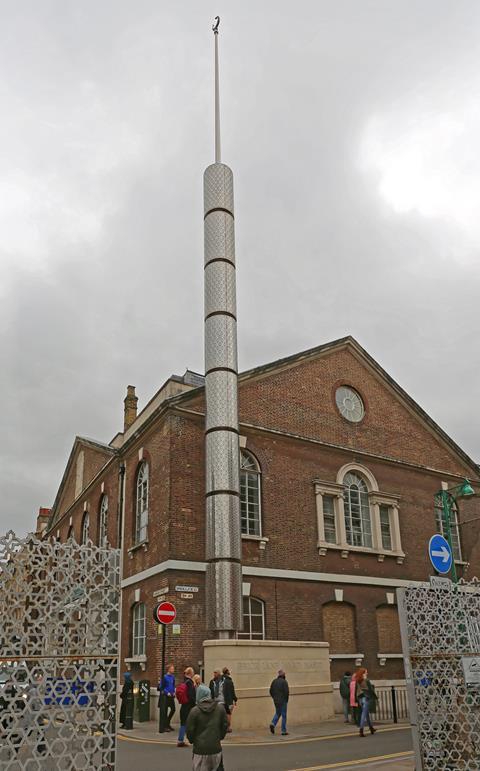
When architect Shahed Saleem was designing a mosque in East London in 2004, he presented his vision of a contemporary building that would reflect the hybrid nature of British Muslim identity. The committee chairman, a migrant from Sylhet, Bangladesh, listened thoughtfully before delivering a response that would reshape Saleem’s understanding of his own practice: “Brother, we don’t want a multicultural minaret like the one at Brick Lane. We want an Islamic minaret.”
This exchange, recounted at the Architecture Foundation’s Architecture on Stage event, cuts straight to the heart of Saleem’s new book The Counter-Architecture of the British Mosque – a study that positions the often-maligned aesthetic of Britain’s mosques not as architectural failure, but as one of the most successful forms of cultural resistance in late 20th-century Britain.
Origins and adaptation
Speaking to a packed audience, Saleem traced the evolution of the British mosque from its origins in an 1889 Liverpool terrace house to today’s purpose-built structures. His account reveals how Muslim communities, largely excluded from mainstream architectural discourse, developed their own spatial language through necessity, pragmatism and sheer determination.
“A mosque in its most elemental form is a wall or an axis marked on the floor, not necessarily even a building, to enable prayer,” Saleem explained. “Beyond this simple programme, all other manifestations of the mosque are cultural and symbolic.”
The story begins with Abdullah Quilliam, an English lawyer who converted to Islam after travels in Morocco and established Britain’s first mosque through the adaptation of a Liverpool terrace house. This template – the mosque as “user-led and incrementally established place through the adaptation of an existing building” – became defining.
From the 1960s onwards, as migrants from northern Pakistan, Gujarat and Bangladesh settled across Britain’s towns and cities, mosques began emerging throughout the country. “There was no coordinated effort of mosque building,” Saleem noted. “Each mosque was the endeavour of the Muslim community. They raised funds primarily amongst themselves, and so mosque growth was organic and responsive to those specific community needs.”
The result was a hybrid architecture that merged Islamic architectural references with local materials and forms. Saleem’s photographic survey shows mosques where Victorian brickwork sits alongside fibreglass domes, where minarets sprout from industrial premises, where the sacred is carved out of the everyday.
Spatial fundamentals
The evening’s chair, Dr Neal Shasore, pressed Saleem on this spatial understanding of the mosque. “I was very struck by the fact that you describe the essence of the mosque actually in spatial terms, in terms of the wall and the axis,” Shasore observed. “Is that you and your architectural sensibility able to describe it in spatial terms, or is that really how we should all think about the mosque as fundamentally a spatial idea?”
Saleem’s response highlighted the embodied experience of adapted mosque spaces: “You might walk into a house which has become a mosque, and suddenly you find that these very organised rows of prayer are at a funny angle, into the corner, and people are having to really negotiate themselves around this building to carry out this act of worship.”
Architectural prejudice and orientalism
Yet this architectural hybridity has faced sustained criticism from the architectural establishment. Saleem quoted a particularly damning 1977 Architectural Review editorial that contrasted Christian architecture’s ability to “accept modern architecture” with Islamic architecture’s supposed fixity: “The Muslim religion is based on an acceptance of a set of eternal truths… There was no motive to depart from these forms.”
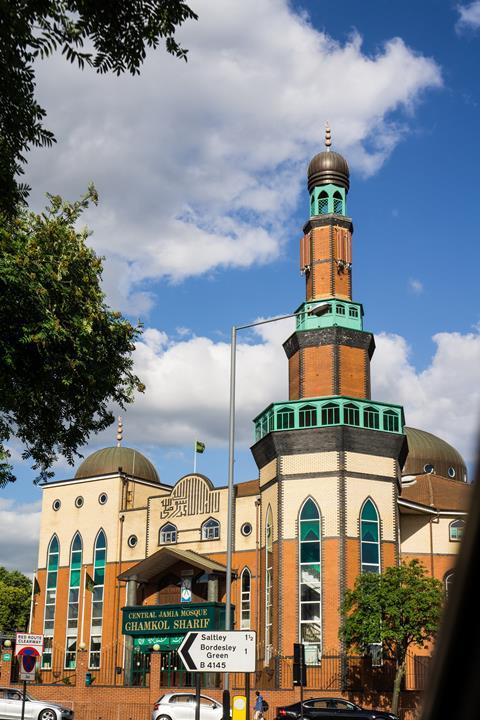
The editorial concluded with orientalist flourish: “It is this difference in cultural attitude which gives modern Islam its flimsy look in Western eyes, and why it is so difficult for us to shake off associations with Turkish delight and Alibaba.”
Saleem’s response is robust: “What history shows is that Islamic architecture has been a continuous series of adaptations and inventions across time and place.” The real issue, he argues, isn’t architectural stasis but the way mosque-building communities have been positioned outside mainstream architectural culture.
Criticism has also come from within Muslim communities. Saleem cited Abdul-Hakim Murad’s description of diasporic mosque architecture as “barbarian orientalism and garish syncretism designed by underpaid jobbing architects who are dully recalling culture in the subcontinent.” Architectural critic Jonathan Glancey’s 2002 Guardian piece asked: “Why are there no great British mosques?” dismissing most as “no more than brick boxes with minarets and domes applied like afterthoughts.”
The reality of practice
Saleem’s own practice revealed the tension between architectural ambition and community needs. “No client has ever said we want a spiritual space or we want a sacred space,” he admitted. “It’s always been about, we need to get 500 people into this thing, and how do we do it?”
When he suggested double-height spaces with natural light, the response was invariably practical: “Yeah, but then we can’t get as many people in.” This utilitarian approach, Saleem suggests, reflects communities that are “not necessarily commissioners of buildings” and come “from places where they’re also much more socioeconomically marginal.”
Shasore pushed back on this characterisation: “Isn’t that a lost confidence through migration and it’s as much about the inherent racism or kind of cultural supremacism inherent in Western European architecture?” He questioned whether the issue was simply unfamiliarity with architectural processes or something deeper about cultural displacement and power relations.
Gender and space
Audience members raised questions about gender inclusivity in mosque design, with one noting how women’s spaces are often “much more inferior to male spaces.” However, a Muslim woman in the audience challenged this framing, arguing that “the way Muslim women are not considered in design within mosques in the West is a particularly Western problem” rather than an Islamic one, pointing to more equitable arrangements in other Muslim contexts.
She noted that at the Hajj (pilgrimage to Mecca), “you see women and men praying next to each other and that’s the epicentre of Islam,” and that the Prophet’s original mosque was “just a large open space which men and women prayed in, so the women would pray behind the men.”
Resistance through architecture
Perhaps the most provocative aspect of Saleem’s argument is his reframing of the much-maligned “historicist” mosque as an act of resistance. When the Sylheti committee chairman rejected the “multicultural minaret,” was this, Saleem asks, “an act of self-determination and self-identification? Or was it an act of segregation or separatism?”
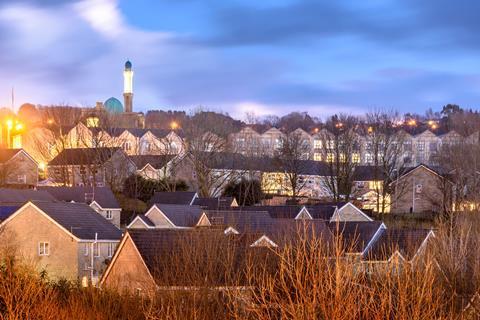
His answer positions the Islamic mosque as counter-architecture: “Marginalised by the artistic academy as being of no value in architectural culture, [it] actually represents one of the most successful and determined forms of cultural resistance to a neo-colonial hegemony.”
Shasore offered a different reading: “I think it is almost the opposite. It is, in fact, recourse to a pan-Arabist, pan-Islamic coloniality in which there is a sort of puritanical set of forms that make something, e.g. a minaret, Muslim rather than anything else.”
This exchange highlighted the tension between different forms of resistance and the complexity of post-colonial identity formation. As Shasore noted, “Where is adaptation allowed, and in particular in a UK context, it’s not about giving up difference or ironing out hybridity, but it has a complexity.”
Creative pragmatism
The book’s photographic survey supports Saleem’s reading, showing how communities with minimal resources created spaces that are both functionally pragmatic and symbolically rich. A chest of drawers turned around with the bottom drawer pulled out becomes a minbar; fibreglass domes crown Victorian warehouses; geometric patterns are applied to suburban brick.
“There’s a creativity that goes on that you see in these buildings that you don’t see in buildings which are designed,” Saleem observed. “I think there’s something quite phenomenal about the fact that people are going to these buildings where devotion is part of their everyday lives in secular Britain, where you have not just migrant generations, but second, third generations of devotees.”
Future directions
As the evening concluded, younger voices in the audience suggested new directions. One speaker called for mosques “designed with the female sensibility,” while a third-generation British Muslim questioned whether future generations would continue mosque-building at all, or whether this remains tied to the migrant experience.
“Subsequent generations will create in terms of becoming de-racialised in some way, and they will draw cultural references and histories and motivations from different sets of stories,” Saleem acknowledged. “But the question is, will those generations be involved in mosque-making at all?”
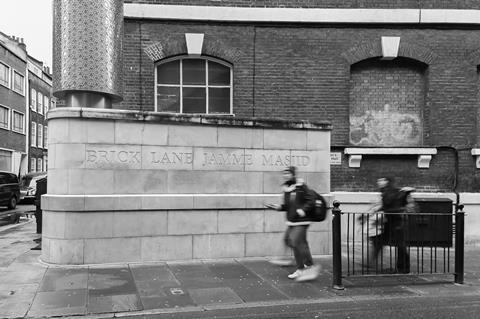
His response was characteristically thoughtful: “I’ve often thought I’m waiting for somebody to come along and say that all of my assertions and assumptions are problematic and incorrect. It’s time to unpack it.”
Shasore’s final observation captured the evening’s broader significance: “I don’t think that that detracts from the ambition of the project that we’re seeing up here or indeed the ways that you have tried to transcribe the spatial complexities and contradictions of the British mosque.”
A new understanding
The Counter-Architecture of the British Mosque offers a compelling case study in architectural typology, showing how buildings emerge from specific social conditions rather than abstract design principles. More provocatively, it suggests that architectural taste itself can be a form of cultural control, and that sometimes the most radical act is simply to build what you need, how you need it, regardless of what the critics say.
The mosque as counter-architecture: a building type that speaks not through architectural sophistication but through sheer persistence, creating spaces of belonging in a society that often questions that belonging. It’s a story that deserves to be heard beyond the architectural academy, in all its complexity and contradiction.
Postscript
The Counter-Architecture of the British Mosque by Shahed Saleem is published by Foolscap Editions, 2025.
The discussion between Shahed Saleem and Neal Shasore took place at the Barbican on 26 June 2025.
Oriana Fernandez is an architectural and urban designer, and a mentor on the RIBA’s Future Architects student mentoring scheme and the University of Westminster’s Future Ready Mentoring Programme. She also serves as the Acting Secretary of the RIBA North London Architects Group and juror for the annual RIBA London Student Awards.


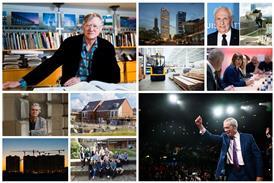
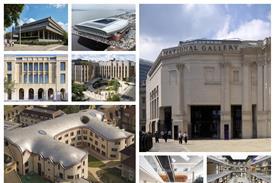

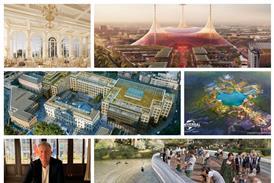










No comments yet